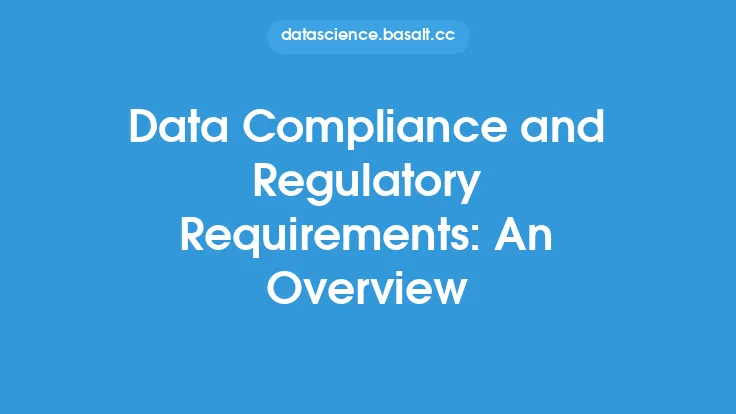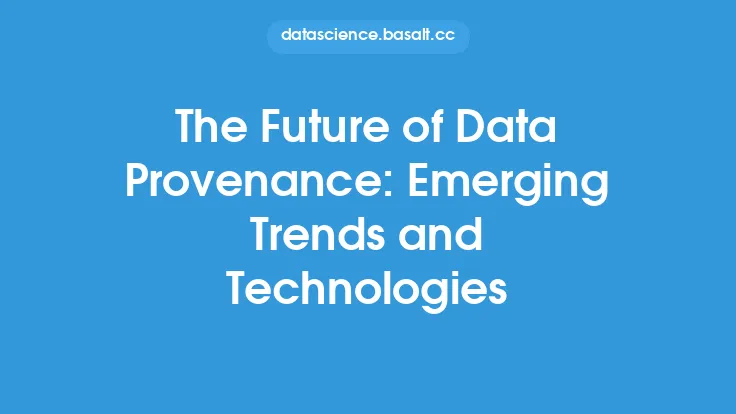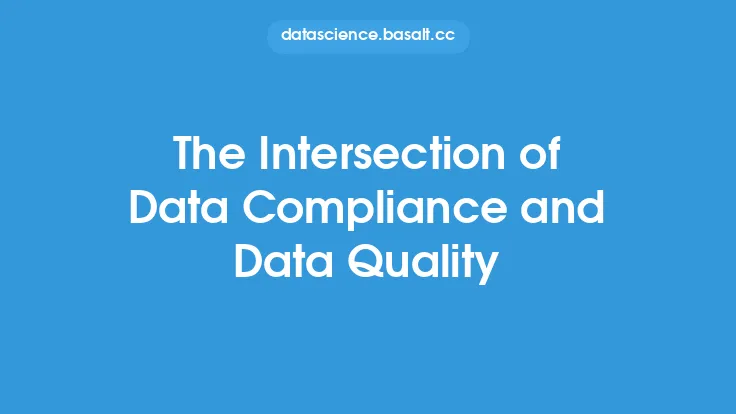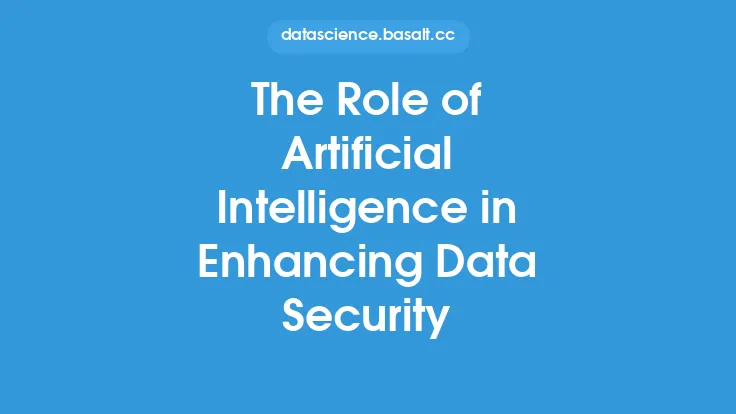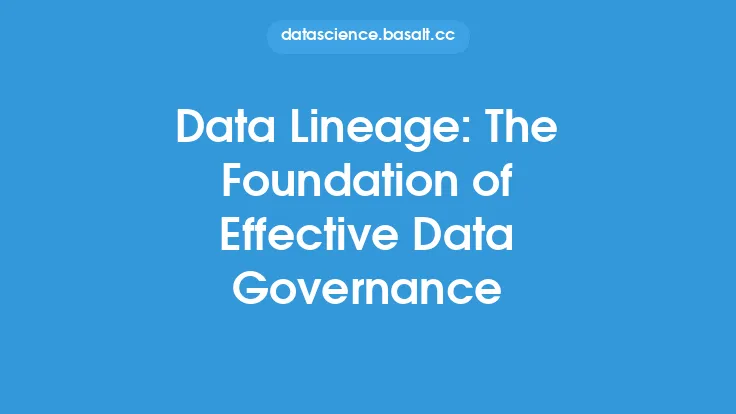In today's data-driven world, organizations are faced with the daunting task of managing and protecting vast amounts of sensitive information. The European Union's General Data Protection Regulation (GDPR) and the Health Insurance Portability and Accountability Act (HIPAA) are two prominent regulatory frameworks that aim to safeguard personal data and ensure its responsible handling. A critical aspect of achieving compliance with these regulations is data provenance, which refers to the documentation of an item's origins, movements, and ownership. In the context of data management, data provenance involves tracking the source, processing, and storage of data to ensure its accuracy, integrity, and reliability.
Introduction to Regulatory Compliance
Regulatory compliance is a critical aspect of data management, as it ensures that organizations adhere to the laws and regulations governing the collection, storage, and use of personal data. GDPR and HIPAA are two of the most stringent regulatory frameworks, with far-reaching implications for organizations that handle sensitive information. GDPR applies to all organizations that operate within the EU or offer goods and services to EU residents, while HIPAA applies to healthcare organizations and their business associates in the United States. Both regulations require organizations to implement robust data protection measures, including data provenance, to ensure the confidentiality, integrity, and availability of personal data.
Data Provenance and GDPR Compliance
GDPR emphasizes the importance of data provenance in ensuring the accuracy and reliability of personal data. Article 5 of the GDPR states that personal data must be "accurate and, where necessary, kept up to date; every reasonable step must be taken to ensure that personal data that are inaccurate, having regard to the purposes for which they are processed, are erased or rectified without delay." To achieve this, organizations must implement data provenance measures that track the origin, processing, and storage of personal data. This includes maintaining records of data collection, processing, and storage, as well as implementing data validation and verification procedures to ensure data accuracy. Additionally, GDPR requires organizations to provide data subjects with access to their personal data, which can only be achieved through robust data provenance measures.
Data Provenance and HIPAA Compliance
HIPAA also emphasizes the importance of data provenance in ensuring the confidentiality, integrity, and availability of protected health information (PHI). The HIPAA Security Rule requires covered entities to implement policies and procedures to track and record all access to and modifications of PHI. This includes maintaining audit logs, access controls, and data encryption to prevent unauthorized access or disclosure of PHI. Data provenance is critical in HIPAA compliance, as it enables organizations to track the origin, processing, and storage of PHI and ensure that it is handled in accordance with regulatory requirements. Furthermore, HIPAA requires organizations to provide patients with access to their medical records, which can only be achieved through robust data provenance measures.
Technical Requirements for Data Provenance
Implementing data provenance measures requires a range of technical capabilities, including data tracking, data validation, and data storage. Organizations must implement data management systems that can track the origin, processing, and storage of data, as well as maintain records of data access, modification, and deletion. This can be achieved through the use of metadata, which provides a standardized way of describing and tracking data. Additionally, organizations must implement data validation and verification procedures to ensure data accuracy and integrity. This can be achieved through the use of data quality checks, data normalization, and data standardization. Finally, organizations must implement robust data storage and security measures, including data encryption, access controls, and audit logging, to prevent unauthorized access or disclosure of sensitive information.
Best Practices for Implementing Data Provenance
Implementing data provenance measures requires a range of best practices, including data tracking, data validation, and data storage. Organizations should implement data management systems that can track the origin, processing, and storage of data, as well as maintain records of data access, modification, and deletion. Additionally, organizations should implement data validation and verification procedures to ensure data accuracy and integrity. This can be achieved through the use of data quality checks, data normalization, and data standardization. Finally, organizations should implement robust data storage and security measures, including data encryption, access controls, and audit logging, to prevent unauthorized access or disclosure of sensitive information. Regular audits and assessments should also be conducted to ensure that data provenance measures are effective and compliant with regulatory requirements.
Conclusion
In conclusion, data provenance is a critical aspect of regulatory compliance, particularly in the context of GDPR and HIPAA. Organizations must implement robust data provenance measures to track the origin, processing, and storage of sensitive information, as well as ensure its accuracy, integrity, and reliability. By implementing data tracking, data validation, and data storage measures, organizations can ensure compliance with regulatory requirements and maintain the trust of their customers and stakeholders. As the regulatory landscape continues to evolve, organizations must stay vigilant and adapt their data provenance measures to ensure ongoing compliance and data protection.
